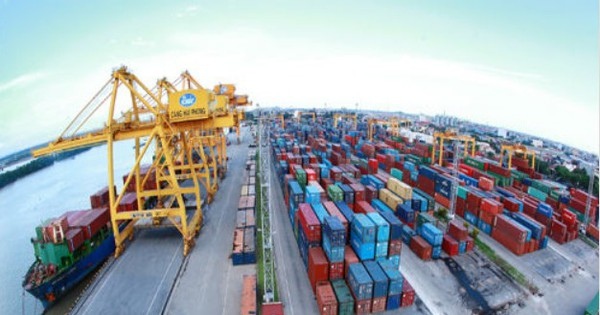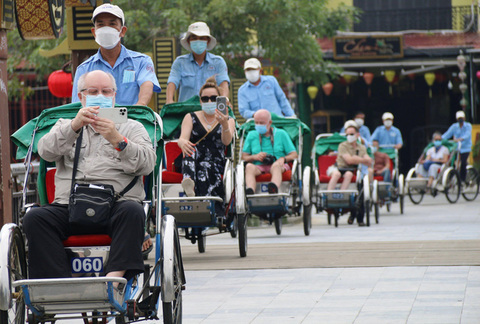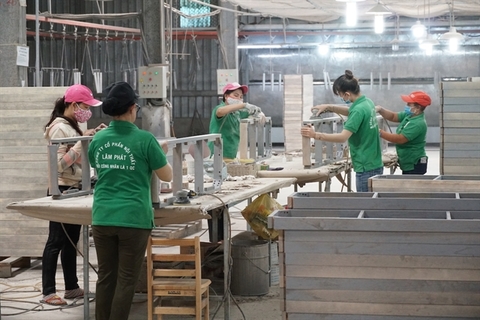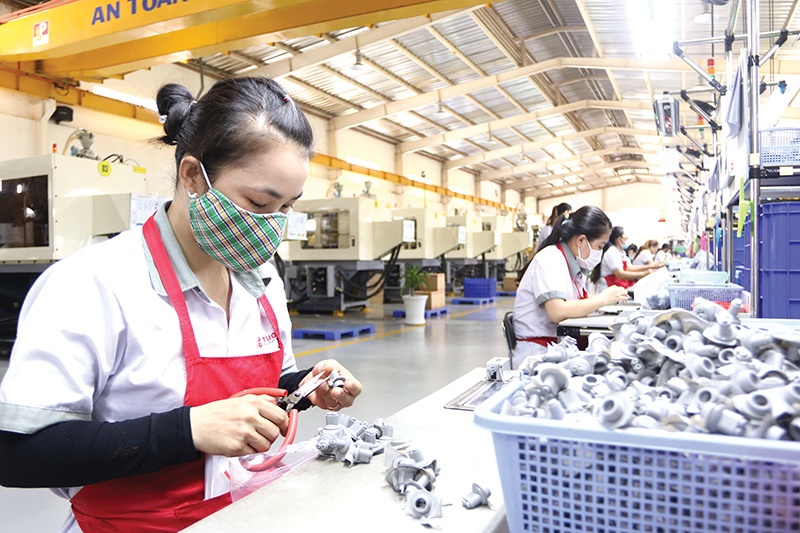Businesses inundated by mandatory infrastructure fees
Businesses inundated by mandatory infrastructure fees
Many businesses in Ho Chi Minh City that are struggling to make a recovery after a long period of closure due to the pandemic, are now finding it very difficult to cope with the pressure to pay various infrastructure fees, as they resume their operations once again.
Illustrative photo. |
In the last two years, businesses have all faced huge labor shortage and constant increasing input costs, and now they are feeling the burden of mandatory infrastructure fees in Ho Chi Minh City. Although many business associations have spoken out and voiced their views against these fees, no response has come in as yet from City authorities.
Constant price increase
At a recent meeting with the Ho Chi Minh City Department of Industry and Trade, Ms. Tran Hoang Phu Xuan, Vice Chairman of the Ho Chi Minh City Textile and Garment Association, said that the most difficult thing for businesses in the garment industry today is the constant increasing price of raw materials. The price of cotton yarn has increased by nearly 70% in the last two years, and raw material for the textile industry has also increased by 40%.
This constant increasing cost in prices is not just affecting the garment industry, but it is also having a ripple affect across many manufacturing and export industries, who too are facing difficulties when the price of raw material jumps as soon as there is a fluctuation in world price. Wood production and exports are typical examples of businesses under such pressure. Although Vietnam is one of the major exporters of wooden furniture, the country also depends a lot on imported wood materials.
Russia has been the supplier of raw wood to Vietnam, but now the conflict between Russia and Ukraine is creating a supply shortage, which is pushing up the price of wood materials in other markets such as the EU and the US. An alternative wood source is being looked into, but it will take time and it will not be resolved soon. According to experts, the wood industry not only faces difficulties in procuring raw materials but also has to be cautious about embargo on Russian products. At this time, enterprises must consider the proportion of wood products imported from Russia as against products exported to two major markets today, namely, the US and the European Union.
Labor intensive enterprises, such as textiles, footwear, and furniture, have been affected strongly by rising input costs as well as many labor problems, especially with a rising number of Covid-19 cases. Mr. Nguyen Chi Trung, Chairman of the Board of Directors of the Gia Dinh Group, said that his business is facing major difficulties due to labor shortage. In the last two years, as the pandemic spread, a large number of workers moved back to their hometowns, but the number of workers returning back to their workplace again amount to only about 80%. Now, the number of people infected with the Covid-19 virus has also increased, forcing businesses to give workers leave of absence of almost seven to ten days, and in some cases even longer. This has caused some departments to work with only about 50% of their work force. Shortage of workers has made some businesses slow down operations and as a result are late in their product deliveries.
The current war situation in Ukraine is now worsening, which is creating a huge shortage of containers at ports, which is subsequently pushing up transportation costs of Vietnamese goods to major markets such as the US and the European Union. The cost of shipping goods from Ho Chi Minh City to the US has increased about ten times more due to the Russia-Ukraine conflict compared to when the market was stable. Expenses have skyrocketed, but output prices could not be increased because of earlier signed contracts with customers, especially those signed until July and August, causing huge financial burden to the exporters. If there is any price increase after the signing of a contract, it must be sustainably low and not increase sharply, because consumers in many countries are also tightening their wallets due to many unpredictable fluctuations across the globe.
Fees need adjustment
Mr. Nguyen Chi Trung said that while businesses are still in difficult situations, support policies such as loans are not yet readily accessible. If from April, Ho Chi Minh City continues to apply the fee for seaport infrastructure, all costs will increase by 10% to 15%, which will also continue to erode profits of enterprises. Mr. Trung said that the Vietnam Leather, Footwear and Handbag Association along with six other associations have submitted a proposal to Ho Chi Minh City to delay the implementation of the seaport infrastructure fees, but there has been no response on this issue yet. Ms. Xuan, representing enterprises in the garment industry, said that at this time, businesses urgently need support and it is necessary to review the fee rates and delay the application deadline to collect fees for seaport infrastructure in Ho Chi Minh City.
According to several enterprises across seven industrial fields, the collection of fee for seaport infrastructure in Ho Chi Minh City is absolutely unreasonable. First and foremost, the application time from June to September 2021 is not justified, as most businesses had to stop operations during this period because of the raging covid-19 pandemic, but still had to continue to pay for running costs such as worker wages, loan interests, inventory and storage costs. From October to December 2021, most businesses could only operate at 30% to 70% capacity due to shortage of workers and lack of raw materials. In early 2022, when enterprises started to resume production, input costs continued to increase. Therefore, the collection of seaport infrastructure fee at this time increased the burden on enterprises.
Although it is nearing the time to start collecting the fees, Ho Chi Minh City has not yet publicly announced the use of these fees for any specific infrastructure projects. However, businesses are continuing to pay a variety of fees related to infrastructure, such as toll fee, road use fee, and BOT fee. Businesses have to pay a rather large fee for transportation when going through BOT stations. For instance, from Khanh Hoa to Cat Lai port in Ho Chi Minh City, there are seven BOT toll stations. Every container that passes through these BOT toll stations has to pay two times, while going and coming. Hence, on an average each year, one seafood enterprise in Khanh Hoa with 3,000 export containers has to pay around VND 7.5 bn for BOT toll station fee. When burdened with this new fee, a medium-sized seafood enterprise outside Ho Chi Minh City will have to pay an additional VND 5.5 bn per year.
Therefore, associations have proposed that Ho Chi Minh City delay the collection of the above fees until the end of December 2022. At the same time, the general fee must be adjusted at VND 250,000 per one 20ft container, VND 500,000 per one 40ft container, and VND 15,000 per ton for liquid cargo. This should also be adjusted for non-container bulk cargo for all import and export shipments, temporary import for re-export, goods in bonded warehouses, cargo transhipment and goods transit as well as the place to register to open the declaration for the shipment.























